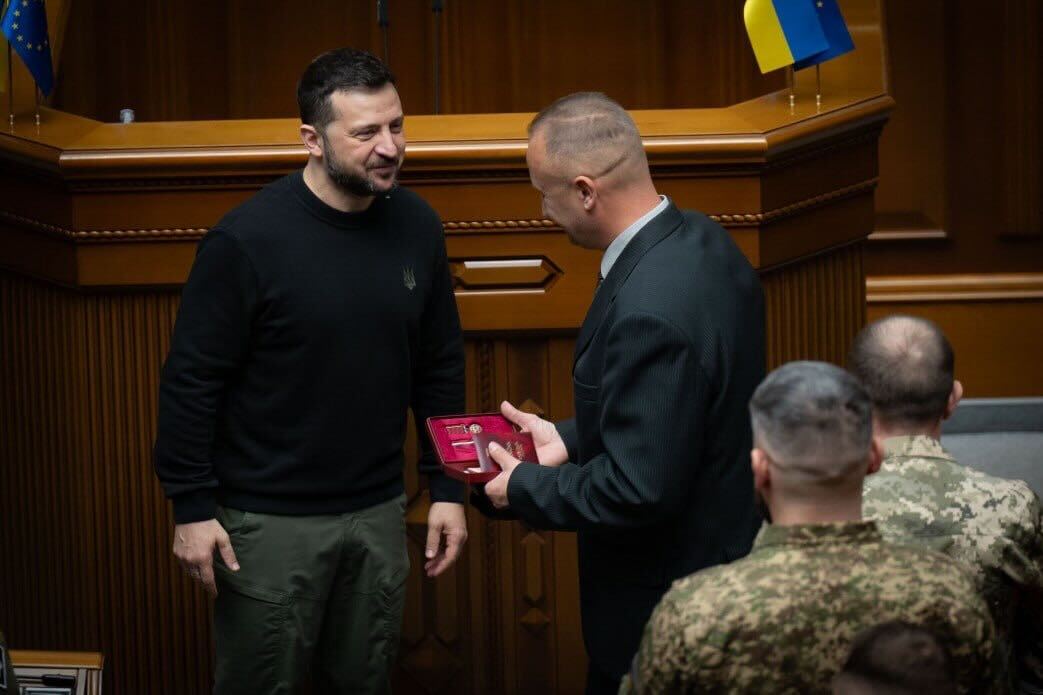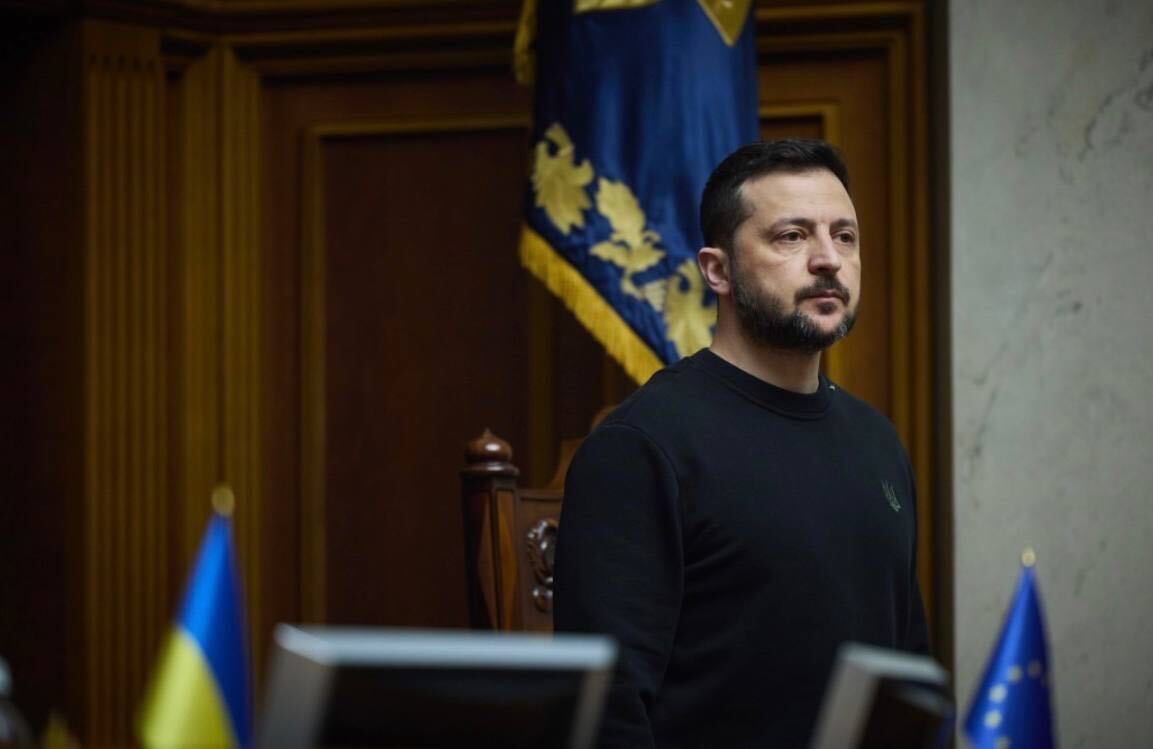10.06.2024
WSJ: Westinghouse is replacing russian fuel and planning to help Ukraine build new reactors

After russia’s full-scale military invasion, Ukraine abruptly stopped buying nuclear fuel from moscow, its top supplier in an industry that accounted for more than half of the country’s electricity generation.
Now, a storied name in American industry is stepping in to keep reactors running, and offering other countries reliant on soviet-designed power plants an alternative supplier.
Westinghouse Electric, which for two decades struggled to challenge russia’s dominant position in Ukraine, now makes fuel bundles that are compatible with all of the country’s reactors and is working on a plan that could allow Ukraine to start making some of that fuel itself. Ukraine also plans to build nine Westinghouse-designed reactors.
Ukraine’s rapid shift marks a big international win for the West, which has long sought to erode russia’s dominance in the industry and the political influence that comes with it. russia’s invasion in 2022 pushed Ukraine and Westinghouse to accelerate work that was already under way, cementing Ukraine’s break from russia and carving a path for European countries with similar, soviet-designed reactors to follow.
“russia lost 15 reactors…for loading of their fuel because of their aggression,” said Petro Kotin, who leads Ukraine’s state nuclear company, Energoatom.
russia is a globally dominant supplier of uranium conversion and enrichment services, two crucial steps in the nuclear-energy supply chain. It is less dominant in producing fuel bundles, which package enriched uranium into a container that can be loaded in a reactor. But for years it was the only supplier for soviet-designed VVER reactors, of which 34 now operate across the European Union and Ukraine.
Westinghouse sought repeatedly to break into the VVER fuel supply market, supported in part by the U.S. government. The company delivered fuel to a handful of those reactors in the 2000s but faced technical problems in the Czech Republic and Ukraine that pushed it to modify its fuel design. It also struggled at times to compete with low prices offered by TVEL, the fuel division of Russian state-owned nuclear company rosatom.
And efforts to displace tvel faced opposition from moscow.
rosatom paid reporters to publish false stories about Westinghouse’s efforts in order to spread fear in Ukraine and the West of a “second Chernobyl,” according to documents reviewed by The Wall Street Journal and a contractor who says he coordinated the work. The kremlin would use its political and economic influence over Ukraine to thwart plans to curb purchases of russian fuel, according to former Ukrainian government advisers.
rosatom said it never paid journalists or authorized such payments by contractors. “rosatom has a zero-tolerance policy on corruption,” a spokesperson for the company said. A spokesman for the Kremlin said russia has always stood for fair competition.
After russia seized Crimea and covertly invaded eastern Ukraine in 2014, Kyiv’s efforts to reduce dependence on russia became more urgent. Energoatom ramped up purchases of Westinghouse’s fuel assemblies and, by the beginning of 2022, six of Ukraine’s 15 reactors had been loaded with fuel from the company.
Westinghouse, now under Canadian ownership with headquarters in Pennsylvania, had also started work to supply Ukraine with fuel assemblies for another model of VVER reactor, the VVER-440. Ukraine has two of them, and the company had initially planned a first delivery for one this year.
Then, in February 2022, russia launched its full-scale invasion. It occupied Ukraine’s largest nuclear power station, Zaporizhzhia, and targeted other energy infrastructure with missiles and explosive aerial drones.
Energoatom’s Kotin knew he needed to act quickly. Without deliveries of the VVER-440 fuel Westinghouse was developing, one of Ukraine’s reactors might need to be shut down, compounding an electricity shortage that was causing blackouts.
“Guys, we need to increase the speed,” Kotin recalled telling Patrick Fragman, Westinghouse’s chief executive, on a phone call.
What followed was a high-stakes race to make the fuel and load it in a reactor near the western Ukrainian city of Rivne, which faced occasional aerial bombardment despite being far from the war’s front line.
The project required Westinghouse to quickly source new machinery and rework its factory floor in Sweden, upending traditional ways of working in a tightly-regulated sector that is better known for its glacial pace. Ukraine’s urgent need pushed Westinghouse to slash a quarter of the time needed for a two-year process—while simultaneously ramping up fuel production for other reactors in Ukraine and Europe.
The effort stood out, in part, because the fuel was destined for a country that is the site of the world’s worst nuclear disaster, in Chernobyl. Westinghouse said there are no safety risks associated with speeding up the production of the fuel.
It was “a massive undertaking,” Fragman said in an interview. “All the disciplines of the organization were basically recruited” into the effort, he said.
The company did have a head start in making the VVER-440 fuel, having previously supplied a Finnish nuclear power plant for several years in the 2000s. But russia had won back Finland’s business and Westinghouse, with no other customers for its design, mothballed production.
The world of nuclear power is methodical and cautious by design, and Westinghouse had no road map for accelerating manufacturing. Westinghouse set up a task force of about 60 people, including a smaller, core group that held weekly meetings to assess progress and identify potential bottlenecks.
The urgency was compounded by russia’s occupation of Ukraine’s Zaporizhzhia nuclear power plant, where staff reported being terrorized by russian security officials and all six reactors were shut down. russian bombing campaigns cut power to cities across the country for days at a time in an effort to demoralize civilians and create a mass exodus from the country.
The kremlin said statements about alleged threats at the power plant are unfounded.
Westinghouse also launched talks with other utilities across Europe. During a meeting at the company’s Sweden facilities in March 2022, representatives from the Czech Republic and other European countries with VVER-440 reactors agreed to accept the same basic fuel assembly design as the one Westinghouse was planning to use for Ukraine—a step officials said helped speed up production because it eliminated some of the time the company would usually spend on customization.
EU imports of russian nuclear fuel shot up in 2023 as utilities stockpiled supplies, trade data shows, but that could be short-lived. Utilities in five countries including Ukraine have since signed deals with Westinghouse for VVER-440 and VVER-1000 fuel deliveries. Some have also announced plans to work with Framatome, a subsidiary of French state-owned utility Electricité de France.
Framatome plans to assemble the fuel in Germany through a joint venture with rosatom’s tvel, in an arrangement some officials have criticized because they say it would extend European dependence on russia.
Framatome said it needs russian know-how to manufacture VVER fuel in the short-term, and the company is simultaneously working on its own design that it hopes to have licensed by 2030.
Building new reactors in Ukraine could prove a thornier challenge. Westinghouse, a spinoff from the Pittsburgh-based conglomerate that morphed into CBS, filed for bankruptcy protection in 2017 after running into trouble with the U.S. construction of four AP1000 reactors—the same model Ukraine plans to build.
It emerged from bankruptcy protection in 2018 and is now owned by Canadian firms Brookfield and Cameco.
Delays and cost overruns are common when building nuclear reactors, said Mycle Schneider, an independent nuclear-policy analyst who is often critical of the industry. “Now you have, in addition, a full-blown war ongoing in the country.”
Westinghouse said it learned from its U.S. experience during the 2010s and no longer takes on reactor construction. Four of the company’s AP1000 models have since come online in China and are operating successfully, it said.
In Ukraine, Westinghouse said Energoatom will be responsible for construction of the new reactors and it will be up to Ukraine to determine when work should begin. Financing discussions are ongoing with the U.S. government’s export credit agency and its development finance institution, the company said.
To produce the fuel assemblies for Ukraine, Westinghouse bought new manufacturing equipment and repurposed existing tools. It pressed suppliers to accelerate orders, often at a steep cost. To speed production, it also 3-D printed some intricate components, which had the added value of providing more consistent quality.
Ten experts from Energoatom traveled back and forth to Sweden to help with the fuel development, often working weekends and late at night. The experts completed documentation for the fuel assemblies in Ukrainian so they wouldn’t need to be translated later, Kotin said.
In September, days before the Rivne reactor would need to be reloaded, the new fuel assemblies were ready. Fragman, the Westinghouse CEO, traveled to Rivne for the event, where he grinned as he posed for a photo with Kotin and Ukraine’s energy minister, Herman Halushchenko, both clad in army-green.
Westinghouse delivered a first batch of VVER fuel to a nuclear power plant in Bulgaria this spring and has said a delivery to the Czech Republic should take place this year.
Energoatom says it is working on plans for a new factory south of Kyiv where it plans to manufacture its own Westinghouse-designed fuel assemblies. Workers in April poured cement to prepare for the construction of two Westinghouse-designed nuclear reactors at the Khmelnytskiy plant, which Energoatom hopes will surpass Zaporizhzhia to become the country’s—and Europe’s—largest nuclear facility.
MORE NEWS

Energoatom is deploying small modular reactor technologies in Ukraine
22.11.2024

Today, Ukraine celebrates the Day of Dignity and Freedom
21.11.2024

Volodymyr Zelenskyy decorated SUNPP employee with a state award
20.11.2024

Volodymyr Zelenskyy: “Nuclear generation is an obvious priority in the energy sector”
19.11.2024


 UA
UA





